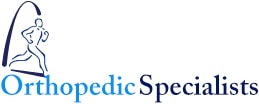General Instructions
1) Wear the cervical collar at all times except for showering, wound care and meals.
2) It is not uncommon to experience a sore throat, increased mucus production, the sensation of “a lump in the throat” and/or uncomfortable swallowing. Try medicated lozenges, ice chips, liquids/soft foods and progress as tolerated. CALL THE OFFICE IMMEDIATELY and/or go to the E.R. if you experience worsening or severe difficulties swallowing, difficulty breathing and/or progressive swelling under or near the incision.
3) Take pain medicine(s) as prescribed and as needed, being careful not to exceed the daily maximum dose. Generally speaking it is better to take smaller amounts more frequently (i.e.: one pill every 4 hours), than trying to “wait it out” (i.e.: needing to take two pills because you tried to wait until 6 hours between doses). Call the office if your pain is not responding to the medication.
4) You may apply cold packs to the surgical site(s) if this helps your discomfort (on for 15 minutes/off for 30 minutes).
5) Constipation is a common post-operative issue. Drink lots of fluids, get up and walk, use stool softeners (Colace) while on narcotic pain medicine. Everyone’s frequency of bowel movements is different. So, if you feel you “need to go”, take a laxative of your choice (Dulcolax, Senokot, M.O.M.). You may also try a suppository or enema. If these do not work, you may try Fleets phospho-soda or Magnesium Citrate. All of the above-mentioned meds are available over-the-counter. If you are still unable to have a bowel movement with these measures, call the office.
6) Do not smoke, chew or use any nicotine-containing product after surgery as it increases your risk of not healing properly (this was discussed in your pre-op consultation in more detail).
7) Do not take any non-steroidal anti-inflammatory drugs (NSAIDs) for three months after surgery (ibuprofen, naproxen, diclofenac, nabumetone, etc.).
Activity
1) No lifting greater than 10-20 lbs. No heavy pushing/pulling movements with your arms. No overhead work.
2) Frequent, short walks are encouraged. Alternate with rest. Advance to longer periods of exercise as your endurance builds. Use of a treadmill, elliptical or stationary bike is acceptable.
3) No driving until the doctor releases you from use of collar and range of motion is normal. You may ride in a car as a passenger.
4) Sleeping in a recliner or with your head elevated may be most comfortable. Ultimately, any comfortable position is fine as long as you are wearing the collar and your spine is in alignment.
5) You may climb stairs as needed.
6) If sent home with an incentive spirometer, use once per hour while awake.
Wound Care
1) Change the dressing daily. When you remove the gauze, there will be small strips of tape across the incision (Steri-strips). Do not remove these strips. Simply replace the old dressing with clean, dry gauze. No ointments/salves/etc. to the incision.
2) You may sponge bathe or even shower. No tub bath, Jacuzzi or pool. Water can run over the surgical site, but do not soak it or scrub it. Pat the area dry and apply the clean, dry dressing.
3) Small amounts of drainage (ranging from bloody to straw-colored) can occur, typically not exceeding the size of a silver dollar. The incision may be slightly pink and/or warm to touch which is not unusual. But, if you notice an increased amount of drainage, increased redness, heat, swelling, tenderness, pain around the wound, a fever of greater than 101.5˚, a sudden opening of the incision or any drainage that is cloudy-yellow or greenish in color, CALL THE OFFICE IMMEDIATELY.
Follow up: You should schedule a post-operative appointment to see Dr. Chabot in the office 10-14 days following surgery
Questions: If you have any other questions or concerns, please call our office at (314) 909-1359.
